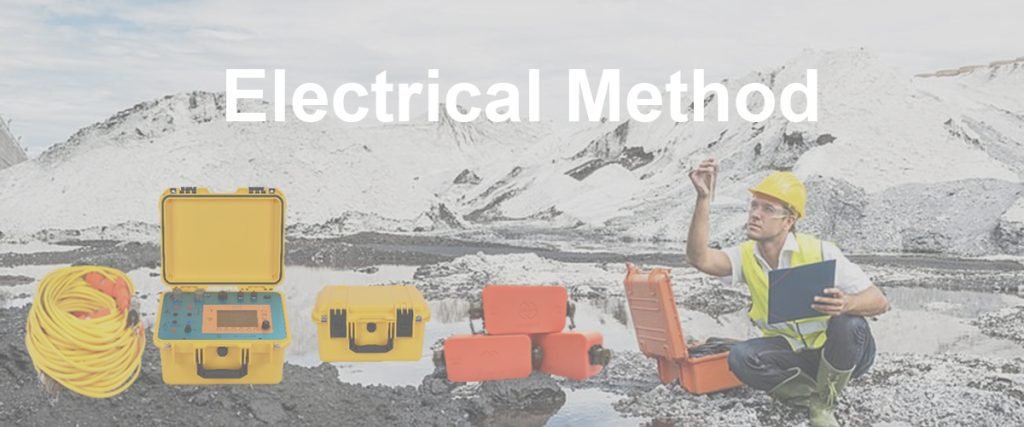Welcome to Geotech!

What is Electrical Resistivity?
I. Introduction
Electrical resistivity is a fundamental property of materials that quantifies their ability to resist the flow of electric current. It is a crucial parameter in various fields, including physics, engineering, and materials science. This article explores the concept of electrical resistivity, its measurement techniques, applications, and significance across different industries.


II. Definition and Principle of Electrical Resistivity
Electrical resistivity, denoted by the Greek letter rho (ρ), is defined as the resistance offered by a material to the passage of electric current. It is expressed in ohm-meters (Ω·m) and is inversely related to electrical conductivity. The resistivity of a material is influenced by factors such as temperature, impurities, and crystal structure. Understanding electrical resistivity is essential for designing efficient electrical systems and selecting appropriate materials for specific applications.
III. Key Methods of Electrical Resistivity Measurement
(1) Wenner Method
The Wenner method is widely used for measuring soil resistivity. It involves placing four equally spaced electrodes in a straight line and measuring the voltage drop between the inner two electrodes while applying current to the outer two. This method is ideal for geological surveys and environmental monitoring.
(2) van der Pauw Method
The van der Pauw method is particularly useful for measuring the resistivity of semiconductor materials and small samples. It uses four contacts on the perimeter of a flat, uniformly thick sample to apply current and measure voltage, providing accurate results regardless of the sample’s geometry.
IV. Applications of Electrical Resistivity
Electrical resistivity measurements find applications across diverse industries:
- Geological Exploration: Identifying subsurface structures, aquifers, and mineral deposits.
- Environmental Monitoring: Assessing groundwater contamination and monitoring remediation efforts.
- Industrial Processes: Ensuring the quality of industrial fluids and monitoring electrical systems.
- Material Science: Evaluating the electrical properties of materials for specific applications.
- Construction: Testing the resistivity of concrete to ensure durability and resistance to chloride ion penetration.
V. Comparison with Other Testing Methods
(1) Comparison with Traditional Multimeters
- Advantages: Resistivity meters offer higher precision for low resistance measurements, making them ideal for specialized applications.
- Limitations: Less versatile for general resistance measurements.
- Best Application Scenarios: Resistivity meters excel in applications requiring precise measurement of electrical resistivity, such as soil testing and material science.
(2) Comparison with Ground Resistance Testers
- Advantages: Resistivity meters provide detailed information about subsurface electrical properties, whereas ground resistance testers focus on measuring the resistance of grounding systems.
- Limitations: Ground resistance testers are not suitable for detailed geological surveys.
- Best Application Scenarios: Resistivity meters are used for geological and environmental studies, while ground resistance testers ensure the safety of electrical installations.
VI. Advantages and Limitations of Electrical Resistivity Measurement
(1) Advantages
- High Precision: Provides accurate measurement of low resistance values.
- Versatility: Suitable for a wide range of applications, from geological surveys to industrial process control.
- Portability: Many models are designed for field use, allowing measurements in various environments.
- Data Recording: Advanced models can store and export data for detailed analysis, aiding in long-term monitoring and decision-making.
(2) Limitations
- Cost: High-precision resistivity meters can be expensive.
- Complexity: Requires specialized knowledge and experience for proper operation and result interpretation.
- Environmental Sensitivity: Measurements can be affected by temperature and humidity, necessitating controlled conditions for optimal accuracy.
VII. Case Studies
(1) Case Study 1: Geological Exploration in Mining
A mining company used resistivity testing to map subsurface geological structures. By applying the Wenner method, they successfully identified potential mineral deposits and aquifers, optimizing their exploration efforts and reducing drilling costs.
(2) Case Study 2: Water Purity Testing in Semiconductor Manufacturing
A semiconductor manufacturer implemented resistivity testing to monitor the purity of process water. The testing provided real-time data on water quality, ensuring compliance with stringent industry standards and improving production yields.
VIII. Company Product Introduction
As a leading manufacturer of precision measurement instruments, we offer a range of high-performance resistivity meters designed to meet the demands of various industries. Our products combine advanced technology with user-friendly features to provide reliable and accurate measurements.
(1) Product Features
- High-Precision Measurement: Utilizing advanced electronics and algorithms for precise resistivity readings.
- Multiple Measurement Modes: Support for Wenner, van der Pauw, and other methods to suit different applications.
- Rugged Design: Built to withstand harsh environmental conditions, ensuring long-term reliability.
- Data Management: Integrated data logging and export capabilities for comprehensive analysis.
(2) Success Cases
Our resistivity meters have been successfully deployed in numerous projects worldwide. In a mining exploration project, our meters provided critical data that led to the discovery of a significant mineral deposit. In a water treatment facility, our meters helped optimize purification processes, ensuring the delivery of high-quality water to the community.
IX. Future Outlook
The future of electrical resistivity measurement looks promising with advancements in sensor technology, data analysis, and environmental monitoring. Integration with IoT and AI will enhance real-time monitoring capabilities, while improved portability and ease of use will expand their application scope.
X. Conclusion
Electrical resistivity measurement is an indispensable tool for ensuring the quality and safety of electrical systems and geological surveys. Its precision and versatility make it a valuable asset in industries ranging from mining to pharmaceuticals. By choosing our resistivity meters, you invest in a technology that delivers accuracy and reliability, supporting your operational excellence and sustainability goals.
Reference
- Society of Exploration Geophysicists (SEG) https://seg.org/
- Society of Environmental and Engineering Geophysicists (EEGS) https://www.eegs.org/
- Geology and Equipment Branch of China Mining Association http://www.chinamining.org.cn/
- International Union of Geological Sciences (IUGS) http://www.iugs.org/
- European Geological Survey Union (Eurogeosurveys) https://www.eurogeosurveys.org/
-1.png)


